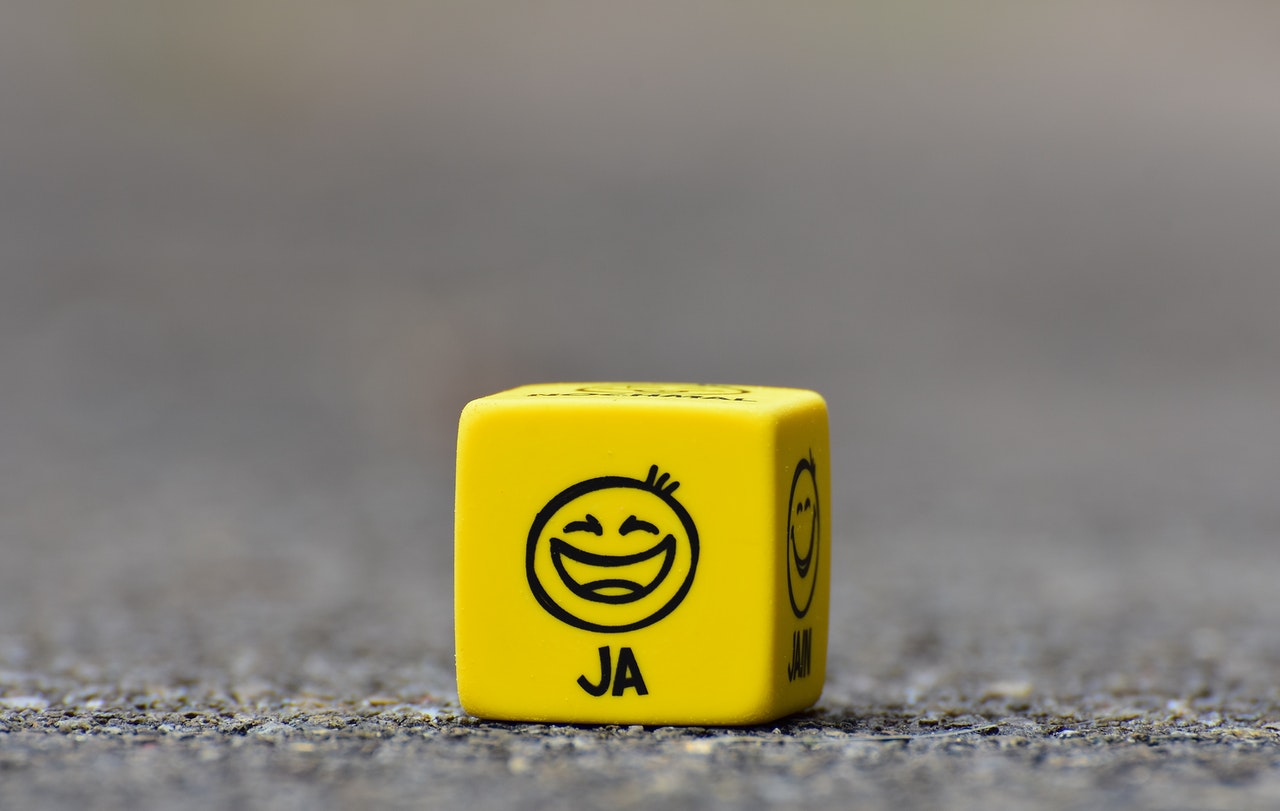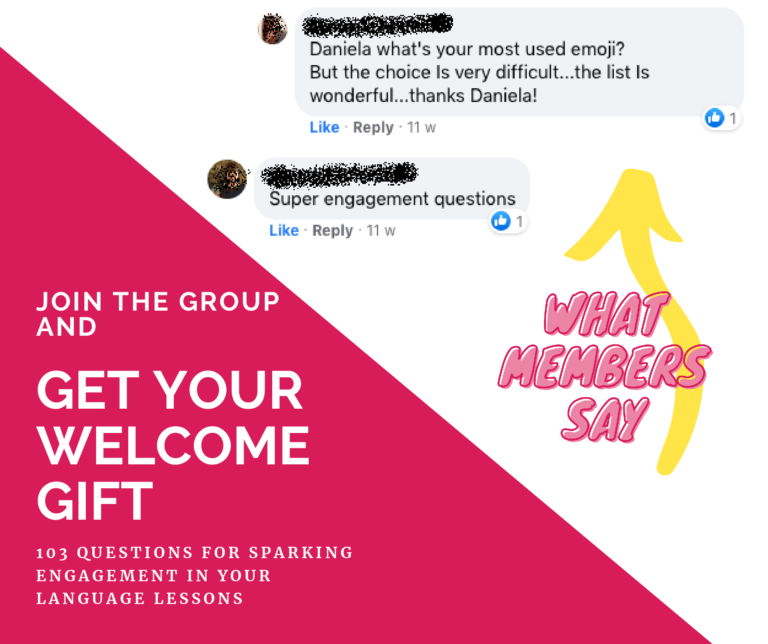
Language learning games can help your students to improve their skills as long as you know how to choose those language learning games that perfectly serve the purposes of your language lessons. In this post you are going to learn how to choose the types of games that better serve your language teaching practice and how to pick them according to the lesson, the goals and your students’ needs. Let’s get serious about games!
Here are the questions I’m going to answer:
- What are language learning games?
- What types of games are the best fit for the language classroom?
- How can you choose the best language learning games for your students?
Let’s get started.
What are language learning games?
Language learning games are playful activities and dynamic exercises you can propose within an educational setting. The main goal of language learning games is to facilitate the language acquisition process. In fact, the acquisition of the target language remains at the centre of all language learning games.
What types of games are the best fit for the language classroom?
There are a number of classifications of games and, more specifically, of language learning games. One of the classifications I personally found more helpful is the distinction between linguistic games and communicative games by the author Jill Hadfield (see her bibliography here).
Linguistic games
Linguistic games focus on accuracy, for instance: find the correct antonym, or turn singular nouns into plural nouns.
Communicative games
Communicative games focus on successful interaction and exchange of information and ideas, for instance: discussing the differences between two similar pictures.
What type of games shall we use in our lessons, then? It depends on the phase of the lesson. Remember the Acquisition and Didactic Unit pattern? In another blog post I explored that topic and you learned about how to structure a language lesson that really facilitates acquisition.
Linguistic games perfectly serve the phases Analysis and Assessment, whilst communication games better suit the phases Motivation (some specific drama games only), Globality, Synthesis, Discussion and Assessment (depending on what skills we need to assess).
The taxonomy is not that strict, therefore you we can find elements of interaction in linguistic games as well as elements of accuracy in communication games. As you can figure it out by yourself, teachers can decide whether to put the accent on accuracy rather than on communication in each type of game. For example: in a labelling game, where students match labels and pictures, we might want them to reflect on the grammar (e.g. the game will focus on plural and singular forms), or we might want them to practice speaking, negotiating, explaining ideas, and so on (e.g. the game will focus on explaining concepts that can be seen from different point of views, for instance: happiness, success, richness).
So, in choosing the language learning games for your lesson plan, the first element you need to keep into consideration is which phase of the lesson you want to gamify. Starting from that, you know you will need games focusing on either linguistic accuracy or communication. That is the first step.
General-wise, linguistic games are easier to deliver than communication games. This is because linguistic games cover specific chunks of information and they focus on specific competences. For instance: learning about synonyms and antonyms. On the contrary, communication games require well engaged students, possibly students who are familiar with language learning games already.
How can you choose the best language learning games for your students?
The second step for you is to decide on the type of language learning games. There are 9 types of games you can choose from. Here they are.
9 types of games:
- Sorting, ordering, or arranging games. For example: classifying verbs describing actions, or putting a dialogue in order.
- Information gap games. In such games, one or more people have information that other people need to complete a task. For example: Pictionary or any quiz where one of the participants has got the answer key and he/she has to give clues.
- Guessing games. These are a variation on information gap games. For example: Twenty Questions, in which one person thinks of a famous person, place, or thing. The other participants can ask 20 Yes/No questions to find clues in order to guess who or what the person is thinking of.
- Search games. These games are another variant on two-way information gap games, with everyone giving and seeking information. For example: Find Someone Who. An example of how this game can be played is that students are each given a grid. The task is to fill in all the cells in the grid with the name of a classmate who fits that cell, e.g., someone who is a vegetarian. Students circulate, asking and answering questions to complete their own grid and help classmates complete theirs.
- Matching games. Students need to find a match for a word, picture, or card. For example: matching nouns with their antonyms.
- Labelling games. These are a form of matching, in that participants match labels and pictures.
- Exchanging games. In these games, students barter cards, other objects, or ideas. Similar are exchanging and collecting games.
- Board games. Scrabble is one of the most popular board games that specifically highlight language. Also, Chutes and Ladders adapted for language learning is another popular example.
- Drama games and storytelling. Role-play exercises, basic and advanced storytelling, creative writing exercises, improvisation: any type of drama game, obviously adapted for the purpose of the language lesson. In another blog post you can find a few examples explained.
Pick the best one for you
The criteria I suggest to keep in mind when you choose the language learning games for your lesson plans is to pick whichever game you feel more confident in delivering. Also, think about the input you want the students to acquire and choose the type of game according to what you think would be the best fit for that chunk. For instance: for analysing and consolidating the meanings of a list of verbs, I would recommend to go for a labelling game or matching game or a sorting game.
The fun thing about language learning games is that you can actually propose exactly the same content through different types of games and your students will still love it because the activity is fun, anyway. They won’t feel tired or bored because they’ll be working on the same content, I promise!
Wrapping up
In this post you have learned you choose between linguistic and communicative language learning games and that your choice should relate to the Acquisition or Didactic Unit phase you want to gamify.
Once you got clear on that, pick the type of game that better suit the type of content you want your students to work on. Choose among the 9 types of games. Remember to keep this choice as simple as you can, to rely on your intuition and to pick something you feel confident with – because you’ll need to deliver it in your class!
Embodying language learning games in your classes is simpler than you think. Tons of free resources are waiting for you on the internet, to feed your imagination. If you don’t feel quite sure about where to start, join my Facebook group for getting support or get in touch directly with me.
Want more support?
Join the Facebook group Independent Language Teachers Collective to get daily advice, tons of free training and to branch out with other independent language teachers like you!
ALSO…
Available only for the Collective members: free list 103 question for sparking engagement in your language lessons.
This is what members say about the freebie:

Join in the Collective and grab your welcome gift:


